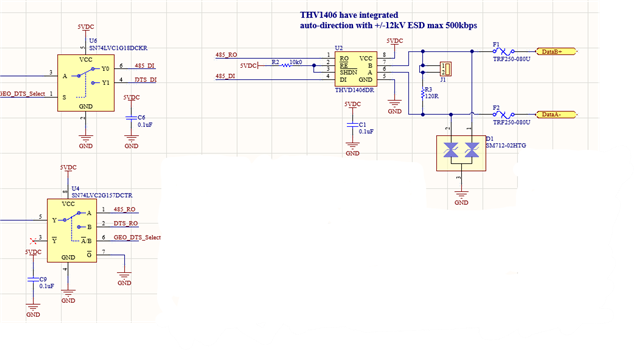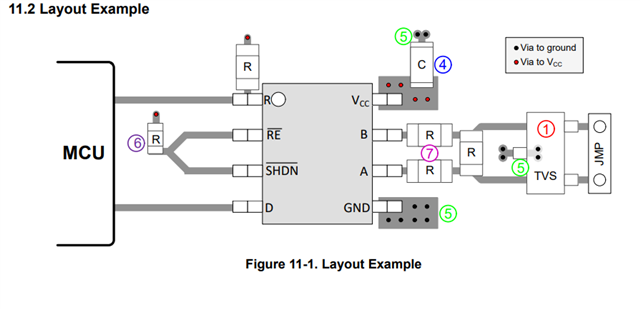Tool/software:
I am working on a design with the THVD1406 and I dont understand some behavior.
I did reproduce the datasheetfor my design with auto-direction


When I power the the circuit, I see a 40mA from my supply.
I did pull to ground the two select pins and the A pin going to 485DI. Those lines were not floating.
If I cut the 485 RO line, thats doesnt change the current
If I remove the R2 pull-up, that doesnt change the current
If I cut the line 485_DI, the current is going to a normal level for my circuit(10-12mA)
The DI pins is linked to the output of a 74lvc1G18DC(2:1 mux) with a supply at the same level(5V)
Measuring the voltage on DI input pin, I see 4VDC.It is suppose to be an input with high impedance?
The circuit is working, but it looks like something is wrong looking at the values.
Can you help me with that?
Also, why do you put a 10k on the RO pins in some schematics and not on other?
Thanks
Daniel Pelletier

